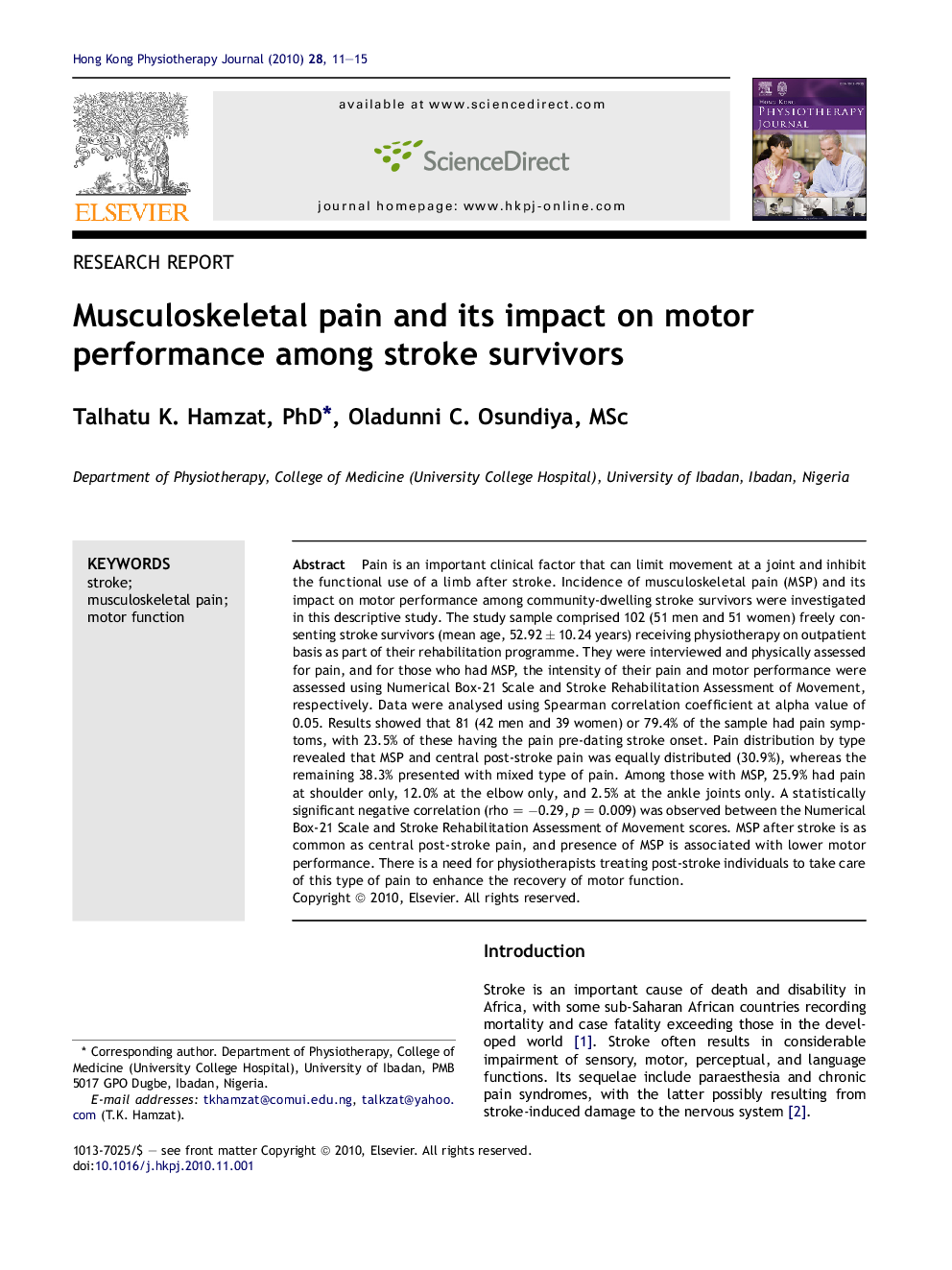| Article ID | Journal | Published Year | Pages | File Type |
|---|---|---|---|---|
| 2617862 | Hong Kong Physiotherapy Journal | 2010 | 5 Pages |
Pain is an important clinical factor that can limit movement at a joint and inhibit the functional use of a limb after stroke. Incidence of musculoskeletal pain (MSP) and its impact on motor performance among community-dwelling stroke survivors were investigated in this descriptive study. The study sample comprised 102 (51 men and 51 women) freely consenting stroke survivors (mean age, 52.92 ± 10.24 years) receiving physiotherapy on outpatient basis as part of their rehabilitation programme. They were interviewed and physically assessed for pain, and for those who had MSP, the intensity of their pain and motor performance were assessed using Numerical Box-21 Scale and Stroke Rehabilitation Assessment of Movement, respectively. Data were analysed using Spearman correlation coefficient at alpha value of 0.05. Results showed that 81 (42 men and 39 women) or 79.4% of the sample had pain symptoms, with 23.5% of these having the pain pre-dating stroke onset. Pain distribution by type revealed that MSP and central post-stroke pain was equally distributed (30.9%), whereas the remaining 38.3% presented with mixed type of pain. Among those with MSP, 25.9% had pain at shoulder only, 12.0% at the elbow only, and 2.5% at the ankle joints only. A statistically significant negative correlation (rho = −0.29, p = 0.009) was observed between the Numerical Box-21 Scale and Stroke Rehabilitation Assessment of Movement scores. MSP after stroke is as common as central post-stroke pain, and presence of MSP is associated with lower motor performance. There is a need for physiotherapists treating post-stroke individuals to take care of this type of pain to enhance the recovery of motor function.
